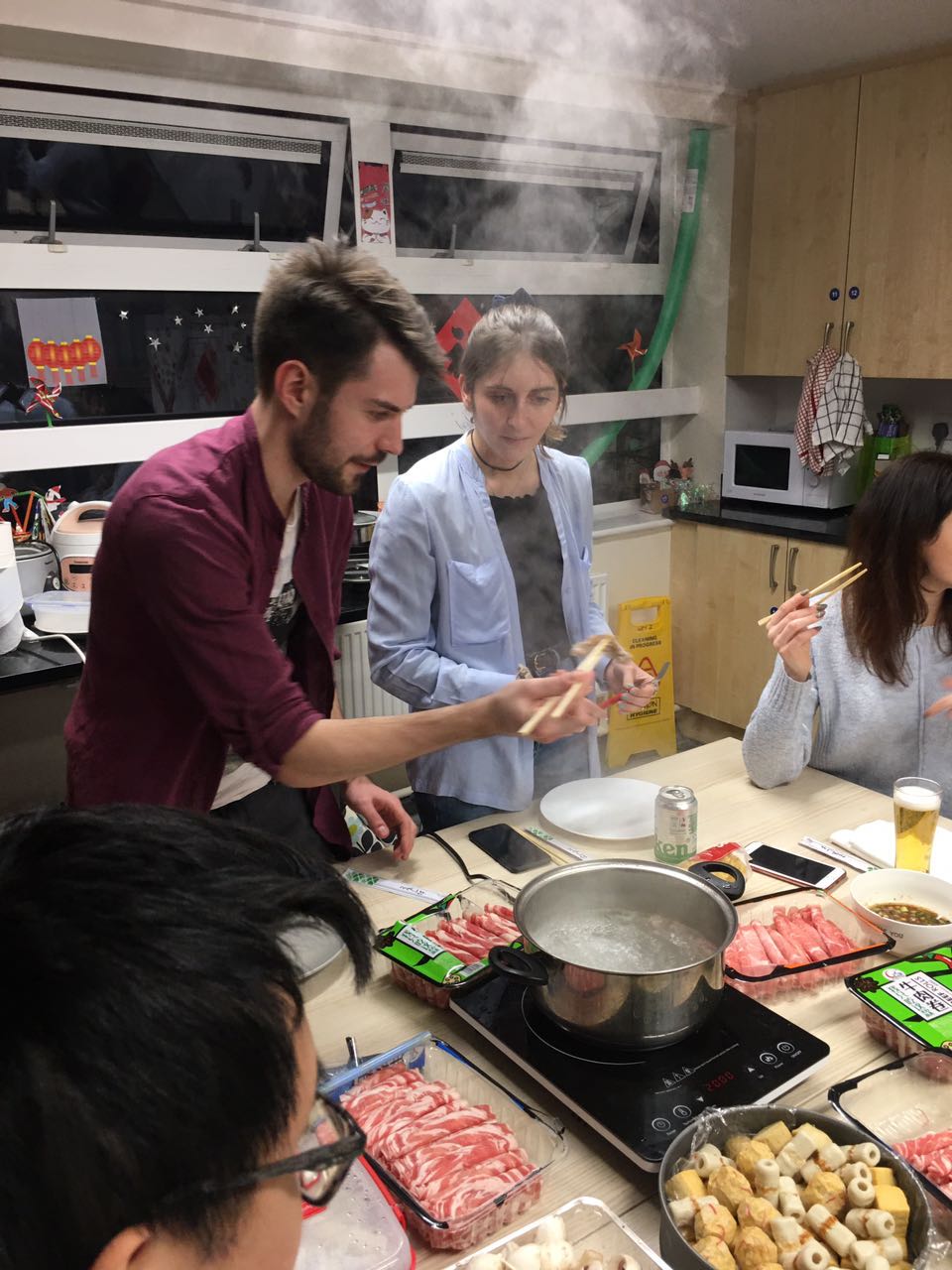
February is an exciting time in China and Chinese communities around the world, as people are gearing up for the Spring Festival (春节 – chūn jié). Known to many as the Chinese New Year or Lunar New Year, this is the most important holiday in Chinese and East Asian culture. The Spring Festival has a rich history as well as plenty of traditions and customs associated with it.
Surrey is an extremely open society that provides us with a wonderful platform to living with friends who come from different cultural backgrounds. So without any doubt, Chinese New Year is another good opportunity to organize a cross-culture event to introduce Chinese traditions, food and culture. There are a series of celebratory events held by uni or Chinese student union, including Young’s Kitchen’s NYE free meal and Chinese New Year Gala. Instead of eating outside, I invited my friends and flatmates to decorate our flat in the ‘Chinese version’ and prepare the food together.
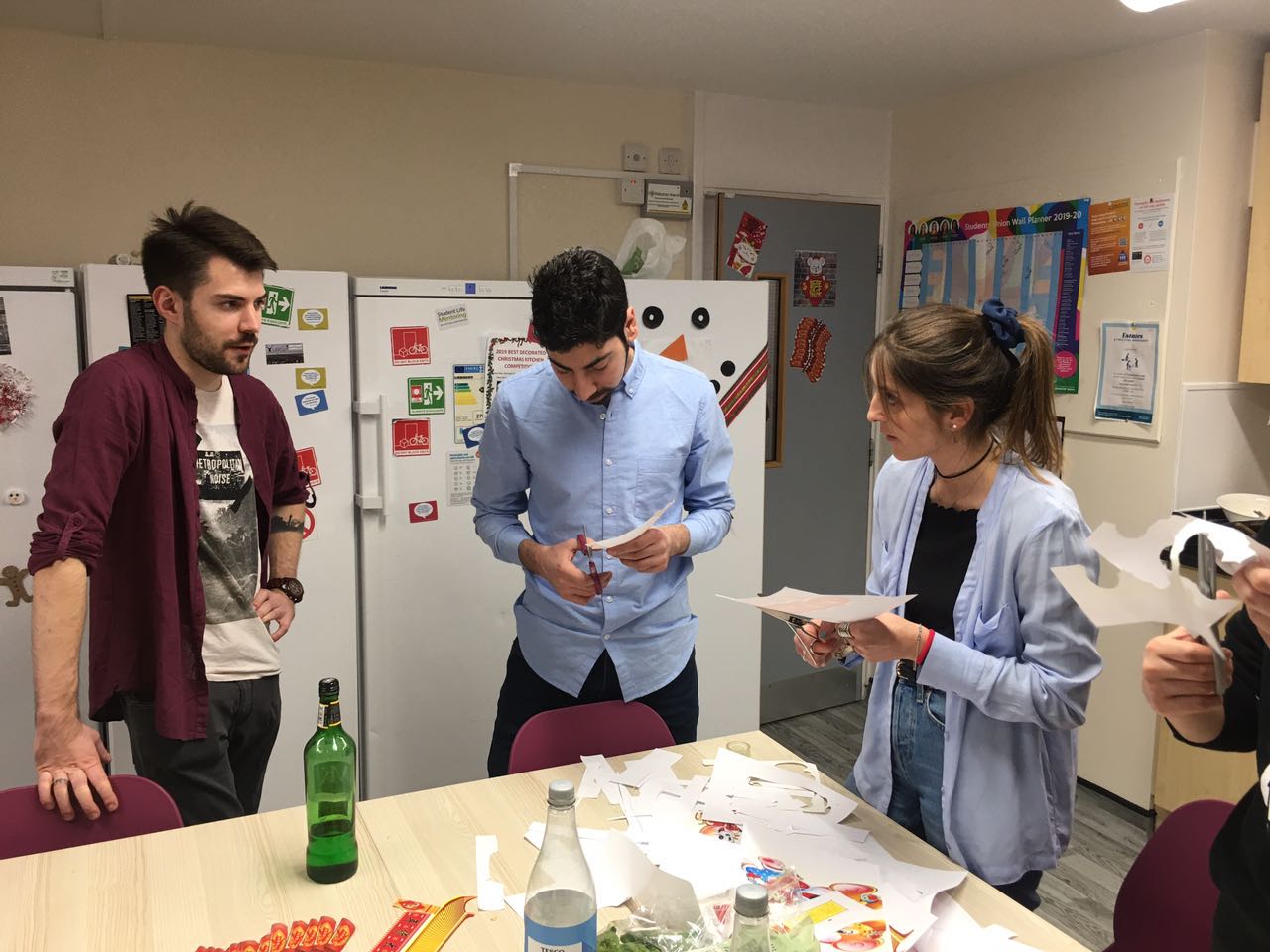
Before we move onto the NYE dinner, let’s me brief you some background knowledge about Chinese New Year:
There are many traditions and customs associated with this holiday, many of which are known throughout the world. For example, the lighting of fireworks, the zodiac symbols, and the famous lion dances. Before we get to all of the celebrations associated with the Chinese New Year, let’s examine some of the history of this great festival.
In the Chinese language, the character 年 (nián) means the year. There’s also a tale from Chinese mythology of a beast called Nian (年兽 – nián shòu), who lived under the mountains or the sea. Once a year, the beast would come out of hiding to attack and eat people. Worst of all, it was especially fond of children. As the story goes, it attacked a village one year, ravaging its crops and feasting on its people. From then on, the villagers would flee the village every year in order to avoid the devastation. However, one year an old man came to the village and asked a local grandma if he could stay in her home. She obliged, although she and the others thought the man would surely die. Once again, all of the villagers ran away, while the old man stayed behind.
That night, Nian showed up just like always. This year, however, things were different, as it noticed red (红色 -hóng sè) paper on the gate. Then it heard the loud noise of firecrackers (烟花 – yān huā), which terrified the monster. In the middle of the home stood the old man, dressed in red from head to toe. The abundance of red and the loud sounds of the firecrackers were too much for Nian to bear, and he fled in fear. The next day, the villagers returned, surprised to see the old man had survived. From that year on, they decided to wear red robes and light firecrackers in order to scare away the beast. Luckily, their plan worked, and the evil Nian was scared away for good. It never bothered that village again, and while it is still believed to exist, it is said that the Nian is scattered amongst the mountains and will never appear in front of humans again. From this story come many of the Spring Festival traditions, such as decorating homes with all things red, lighting firecrackers, and performing a lion dance.
Apart from this, leading up to the new year, there are also many Chinese new year traditions or superstitions about what should and shouldn’t do. For instance, you shouldn’t get a haircut or buy shoes during the first month of the New Year, so these things should be taken care of before the holiday rolls around. It’s said that if you get a haircut, your maternal uncle will die, and that if you buy new shoes, you will have bad things happen to you. This is sound pretty nonsense to you if you don’t know its language context, because the word for shoes (鞋 – xié) sounds exactly like the word for evil (邪 – xié). Other superstitions include paying off all debts before the New Year (otherwise you’ll remain in debt), avoiding references to death or the past, and wearing red (good luck) but not black or white (bad luck).
Likewise, you should clean the house inside and out leading up to the New Year. When you clean before the New Year, you sweep out all of the bad luck from the previous year; however, when you clean during the New Year celebration, it’s quite risky that you sweeping out the good luck. So just leave that pile of dust in the corner, kick back, and watch some TV. There’s also an old story behind the necessity of cleaning the house for the New Year.
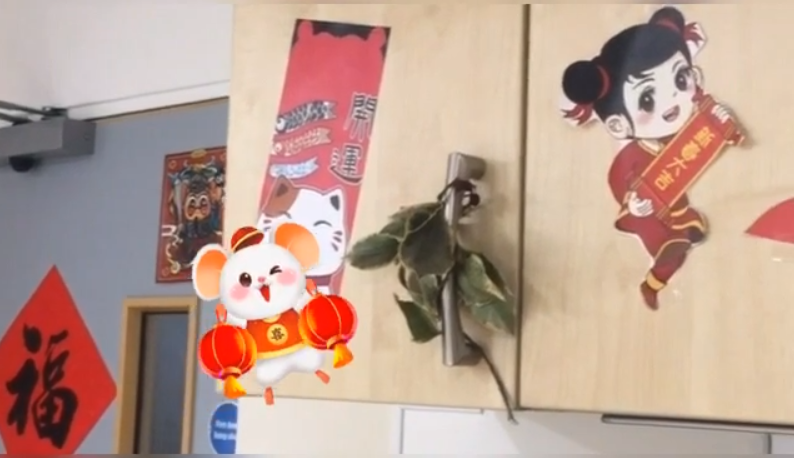
Not only should the house be clean before the holiday, but it should also be decorated. Hang some couplets outside of your front door, and make sure that they are red. Many of these will feature the character for good fortune hung upside-down. This is a play on words, as the saying “fu is upside-down” (福倒了 – fú dào le) sounds the same as “good fortune has arrived” (福到了 – fú dào le). In UK, it’s pretty hard to get some Chinese couplet, so one of our flatmates came up with a very smart idea that we could download some images from Internet then download them colorfully in printer. Several days before the Chinese NYE, we started to use these downloaded images to decorate our kitchen and corridors, everyone cutting paper together and talking a lot on their personal life in Surrey, Chinese culture and traditions and their personal hobbies. The feeling of decorating together really makes each of us feel deeply belong to this international family.
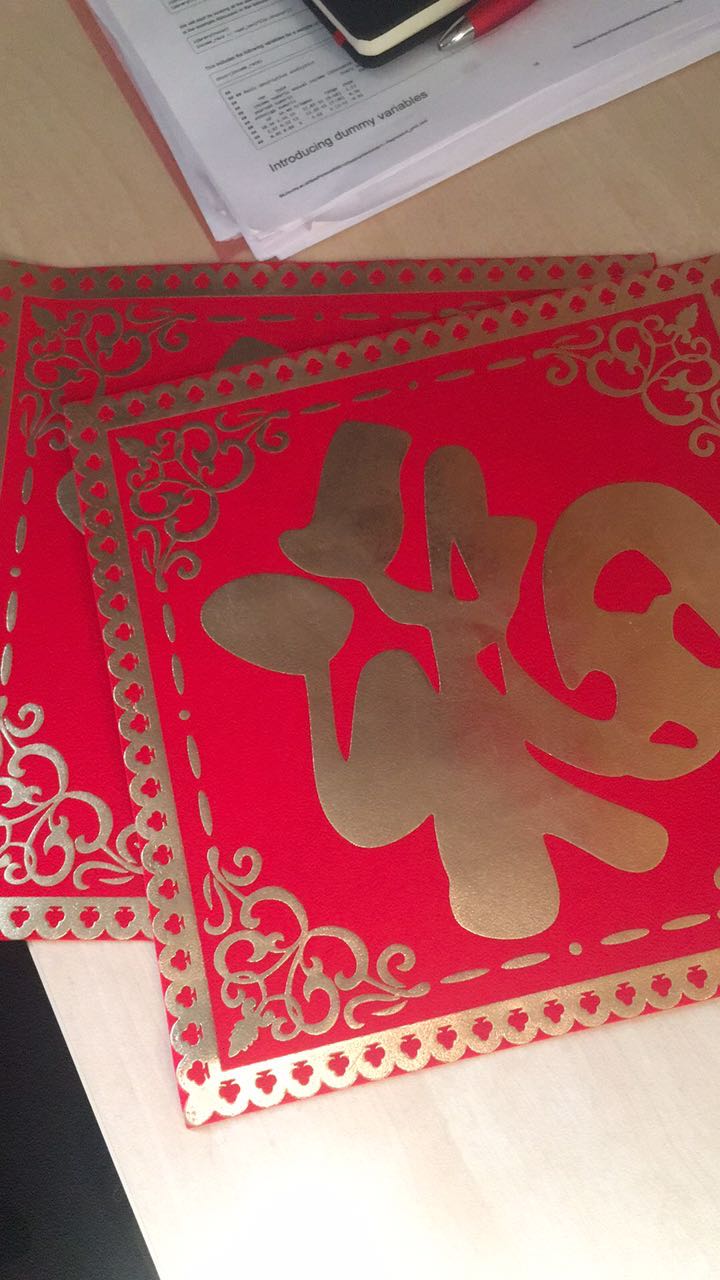
When it comes to the NEY dinner and food served, Chinese families will normally gather together to have a big dinner. In China, many families will eat fish for sure, as it is believed that this will help your wishes for the new year come true. There is even a Chinese idiom that goes, “Every year there are leftovers” (年年有餘 – nián nián yǒu yú). This is a play on words, as 餘 (extra, leftover) and 鱼 (fish) have the same pronunciation. Due to the time limit, we didn’t manage to buy fresh fishes from the local wet market, instead, we prepare a huge hotpot with a great variety of food ingredients, of course fish sticks are included.
In the northern part of China, most people will eat dumplings, which are symbols of wealth as they represent ancient Chinese currency. Some will even put a coin into one of the dumplings, and whoever ends up eating that one will enjoy great luck and prosperity in the new year. Down south, people will cook up a special New Year cake (年糕 – nián gāo), made of gluttinous rice flour. This is another play on words, as it can also mean “a more prosperous year.” Our western friends showed a strong interest in dumplings and try to learn how to process it, and my friend Marco was even able to cook some really awesome dumplings for us! Some eastern Europeans also have the habit to eat dumplings, such as Polish, Russian, and Ukrainian, which gave us more fun of comparing the difference between dumplings.
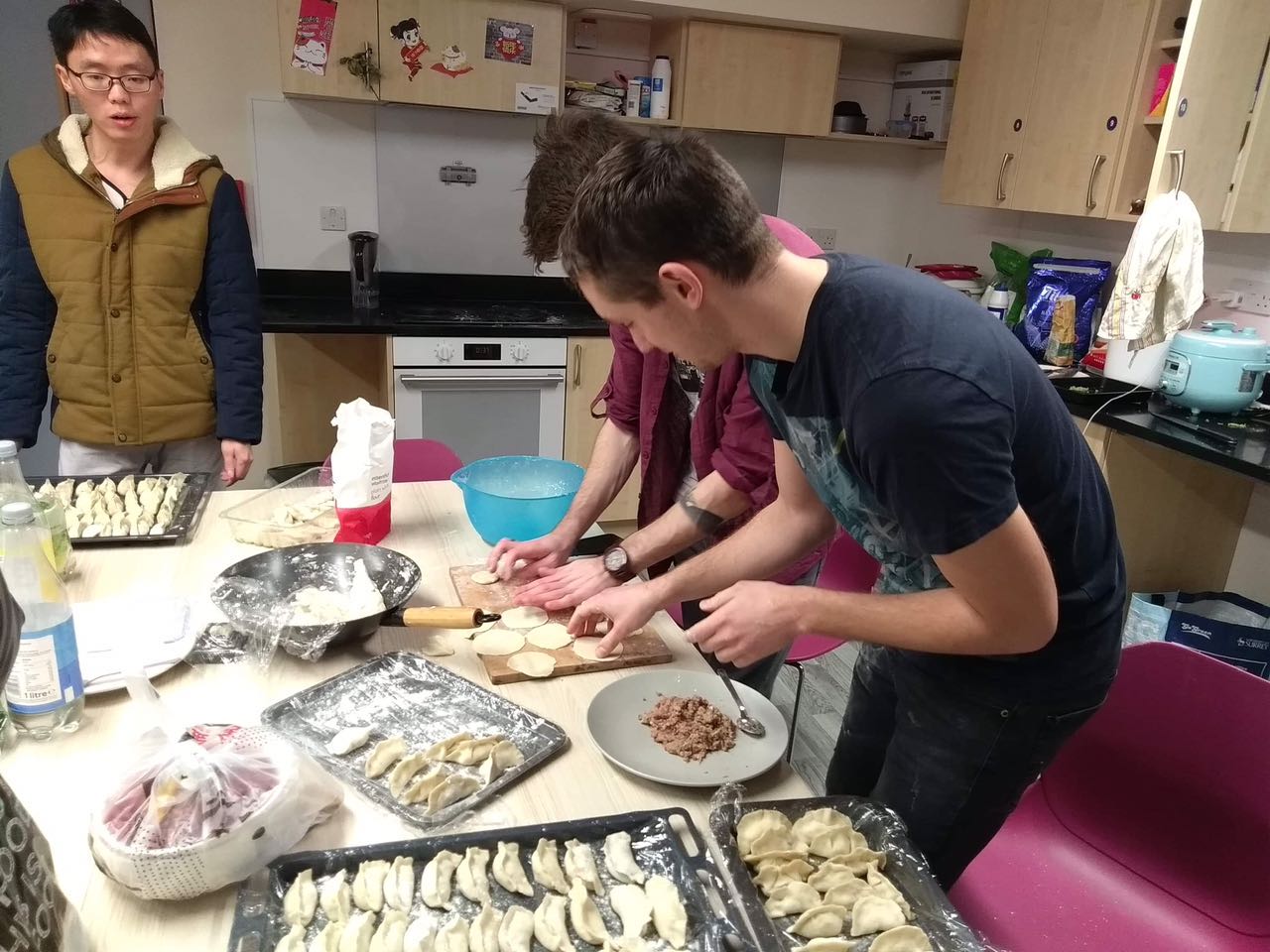
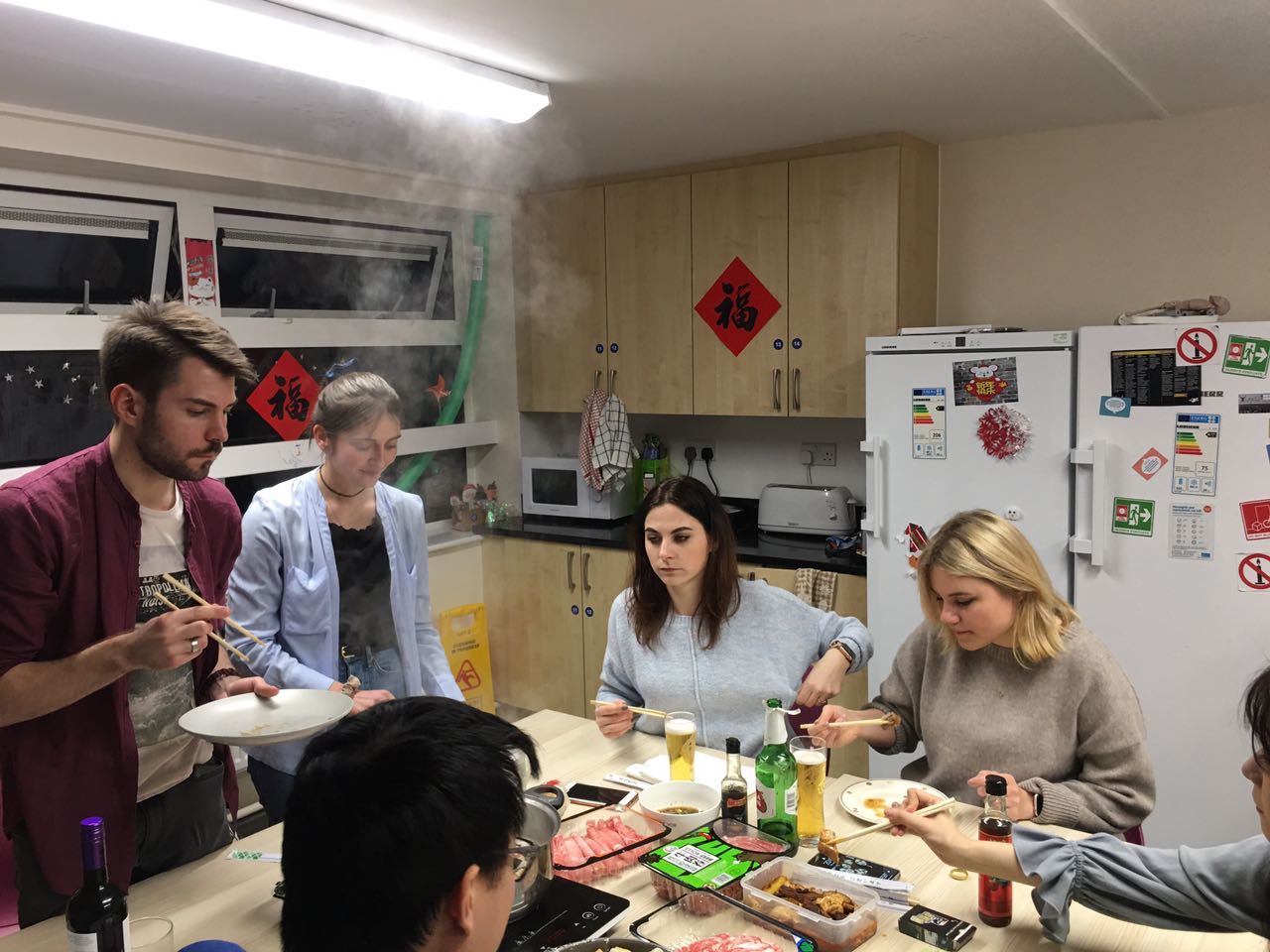
Another famous tradition for Chinese New Year is the lighting off of firecrackers. As I mentioned in the History of the Spring Festival, it is believed that doing so helps keep the evil Nian beast away, as well as other evil spirits in general. Around Spring Festival, it is not uncommon to hear firecrackers going off all day long, and on New Year’s Eve, it seems as if they never stop. But of course, it’s impossible to put fireworks in Guildford! Actually even in China, due to the increasing concerns of the air pollution, NYE fireworks also have already limited very much by the government.
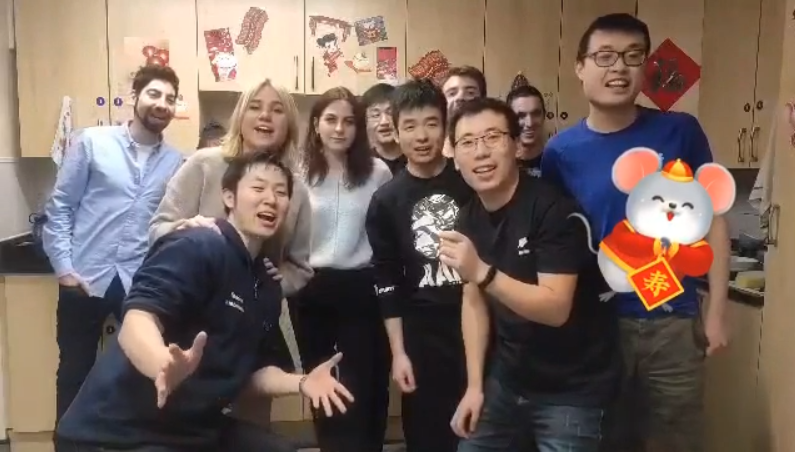
年夜饭的气氛非常热闹,大家品尝了中国风味火锅,交流了很多关于春节的历史文化背景知识,增进了交流和友谊。最终,大家一起开心留影纪念这个难忘的时刻!
